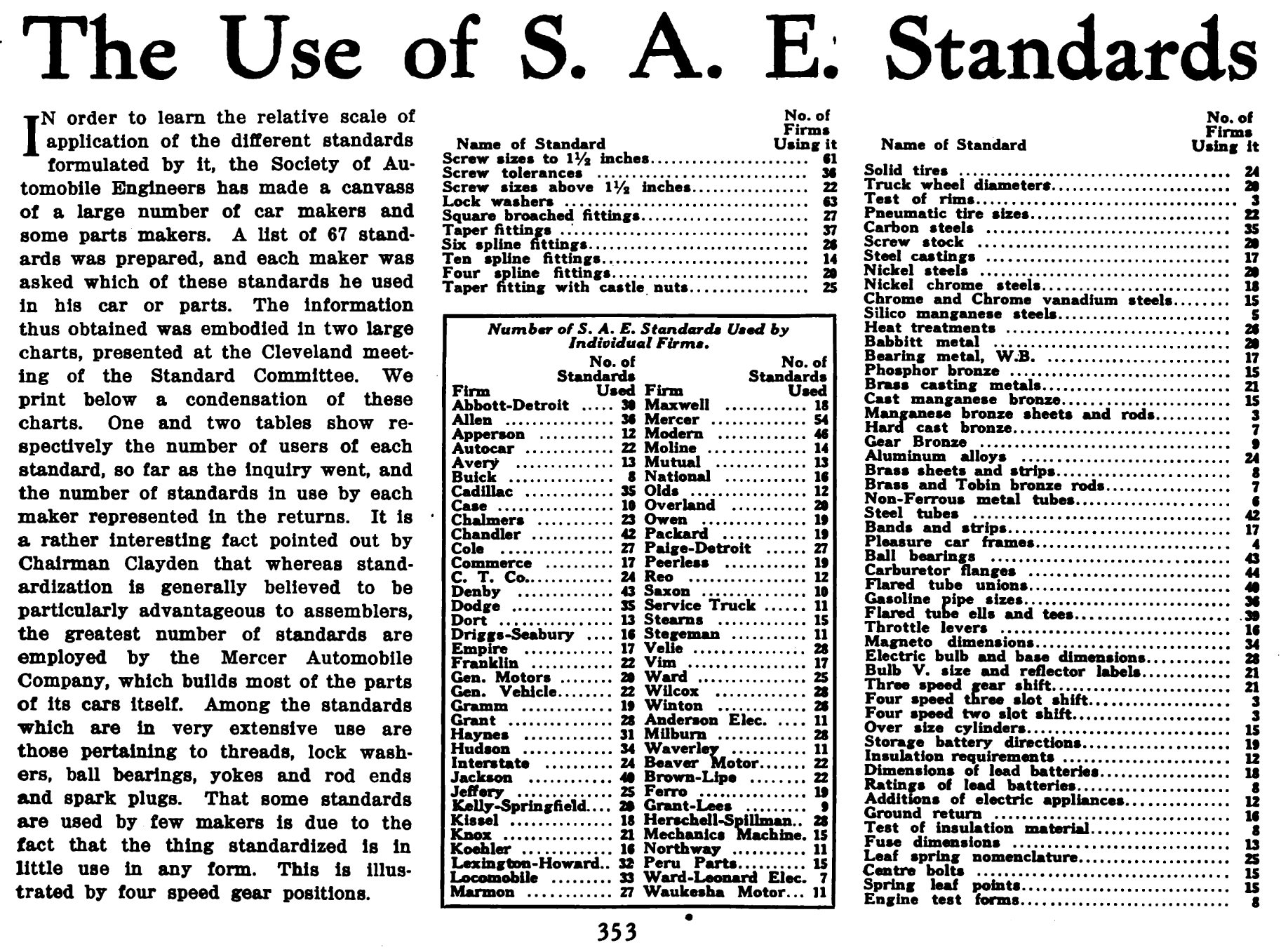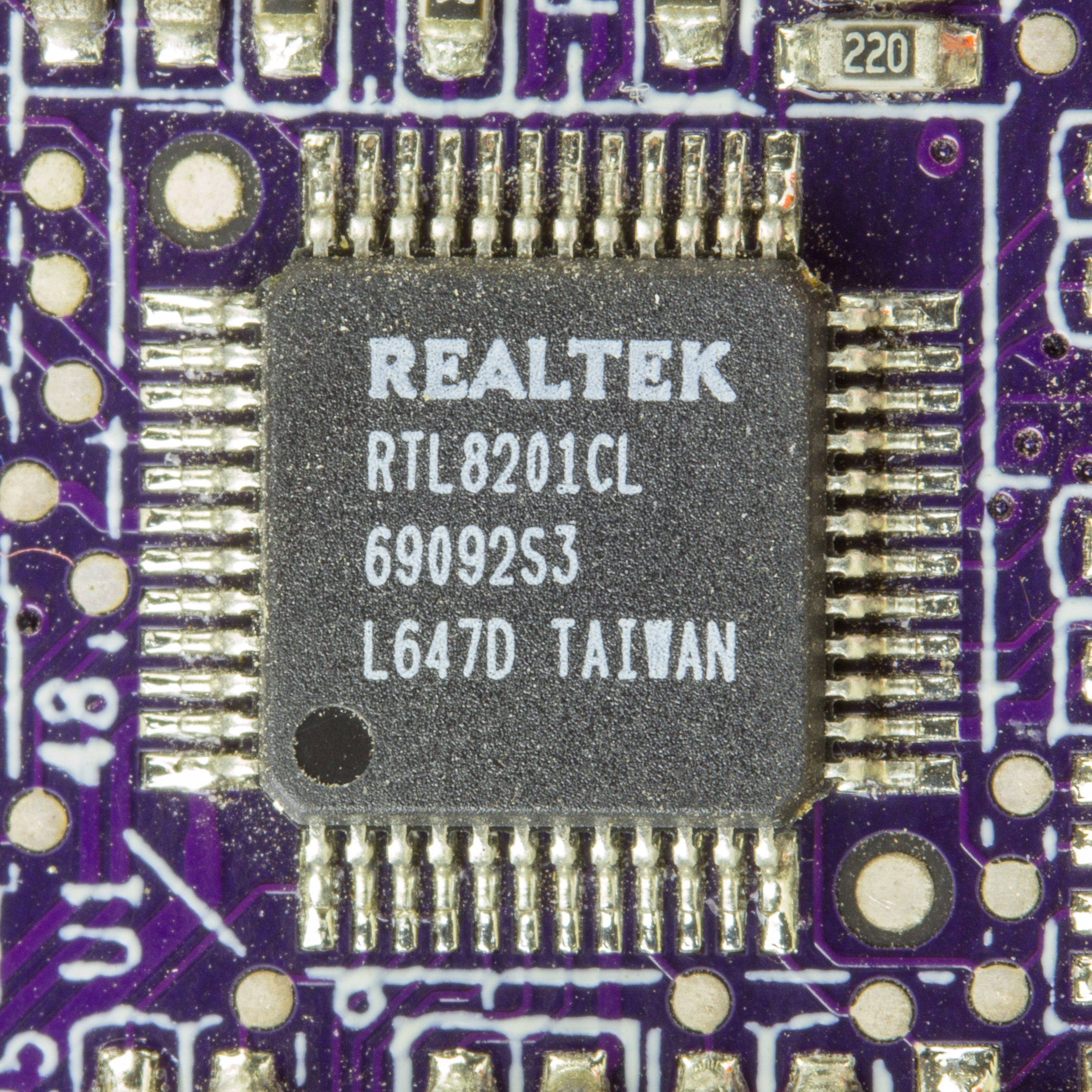|
J1708
Society of Automotive Engineers standard SAE J1708 is a standard used for serial communications between ECUs on a heavy duty vehicle and also between a computer and the vehicle. With respect to Open System Interconnection model (OSI), J1708 defines the physical layer. Common higher layer protocols that operate on top of J1708 are SAE J1587 and SAE J1922. The protocol is maintained by SAE International SAE International is a global professional association and standards organization based in Warrendale, Pennsylvania, United States. Formerly the Society of Automotive Engineers, the organization adopted its current name in 2006 to reflect bot .... Description The standard defines a 2-wire 18 gauge wire cable that can run up to and operates at 9600 bit/s. A message is composed of up to 21 characters, unless the engine is stopped and the vehicle is not moving in which case transmitters are allowed to exceed the 21 byte max message length. Messages start with a Message ID ... [...More Info...] [...Related Items...] OR: [Wikipedia] [Google] [Baidu] |
J1587
Society of Automotive Engineers standard SAE J1587 is an automotive diagnostic protocol standard developed by the Society of Automotive Engineers (SAE) for heavy-duty and most medium-duty vehicles built after 1985. The J1587 protocol uses different diagnostic connectors. Up to 1995, individual OEMs used their own connectors. From 1996 to 2001, the 6-pin Deutsch-connector was standard. Beginning in 2001, most OEMs converted to the 9-pin Deutsch. Some OEMs still use the 6-pin Deutsch. It has mostly been used for US made vehicles, and also by Volvo The Volvo Group (; legally Aktiebolaget Volvo, shortened to AB Volvo, stylized as VOLVO) is a Swedish multinational manufacturing corporation headquartered in Gothenburg. While its core activity is the production, distribution and sale of truck .... Other European brands have usually used KWP. The pinout for the 9-pin connector is: The pinout for the 6-pin connector is: SAE J1708 makes up the physical and data link layers while ... [...More Info...] [...Related Items...] OR: [Wikipedia] [Google] [Baidu] |
Checksum
A checksum is a small-sized block of data derived from another block of digital data for the purpose of detecting errors that may have been introduced during its transmission or storage. By themselves, checksums are often used to verify data integrity but are not relied upon to verify data authenticity. The procedure which generates this checksum is called a checksum function or checksum algorithm. Depending on its design goals, a good checksum algorithm usually outputs a significantly different value, even for small changes made to the input. This is especially true of cryptographic hash functions, which may be used to detect many data corruption errors and verify overall data integrity; if the computed checksum for the current data input matches the stored value of a previously computed checksum, there is a very high probability the data has not been accidentally altered or corrupted. Checksum functions are related to hash functions, fingerprints, randomization functio ... [...More Info...] [...Related Items...] OR: [Wikipedia] [Google] [Baidu] |
J1922
SAE protocol J1922 is a standard for "Powertrain Control Interface for Electronic Controls Used in Medium- and Heavy-Duty Diesel On-Highway Vehicle Applications" (published December 4, 2008). This SAE Recommended Practice provides a development or possibly interim production communication protocol between engine, transmission, ABS/traction control, and retarder systems until higher speed communication links are established. See also *J1708 Society of Automotive Engineers standard SAE J1708 is a standard used for serial communications between ECUs on a heavy duty vehicle and also between a computer and the vehicle. With respect to Open System Interconnection model (OSI), J1708 defi ... External linksSAE International Website Automotive standards {{technology-stub ... [...More Info...] [...Related Items...] OR: [Wikipedia] [Google] [Baidu] |
J1939
Society of Automotive Engineers standard SAE J1939 is the vehicle bus recommended practice used for communication and diagnostics among vehicle components. Originating in the car and heavy-duty truck industry in the United States, it is now widely used in other parts of the world. SAE J1939 is used in the commercial vehicle area for connection and communication throughout the vehicle, with the physical layer defined in ISO 11898. A different physical layer is used between the tractor and trailer, specified in ISO 11992. History Originally, Controller Area Network (CAN) was not mentioned in J1939, which covered cars and tractor-trailer rigs, and with some dual and triple use 8-bit addresses assigned by the SAE J1939 board. CAN was not originally free, but its instruction set did fit in the custom instruction format of J1939. This was true as of 2000. Since then, CAN has been included, the chipset for J1939 has been clocked faster, and 16-bit addresses (PGN) have replaced 8-bit ... [...More Info...] [...Related Items...] OR: [Wikipedia] [Google] [Baidu] |
SAE International
SAE International is a global professional association and standards organization based in Warrendale, Pennsylvania, United States. Formerly the Society of Automotive Engineers, the organization adopted its current name in 2006 to reflect both its international membership and the increased scope of its activities beyond automotive engineering and the automotive industry to include aerospace and other transport industries, as well as commercial vehicles including autonomous vehicles such as self-driving cars, trucks, surface vessels, drones, and related technologies. SAE International has over 138,000 global members. Membership is granted to individuals, rather than companies. Aside from its standardization efforts, SAE International also devotes resources to projects and programs in STEM education, professional certification, and collegiate design competitions. History In the early 1900s there were dozens of automobile manufacturers in the United States, and many more w ... [...More Info...] [...Related Items...] OR: [Wikipedia] [Google] [Baidu] |
Serial Communications
In telecommunication and data transmission, serial communication is the process of sending data one bit at a time, sequentially, over a communication channel or computer bus. This is in contrast to parallel communication, where several bits are sent as a whole, on a link with several parallel channels. Serial communication is used for all Long-haul communications, long-haul communication and most computer networks, where the cost of electrical cable, cable and difficulty of synchronization make parallel communication impractical. Serial computer buses have become more common even at shorter distances, as improved signal integrity and transmission speeds in newer serial technologies have begun to outweigh the parallel bus's advantage of simplicity (no need for serializer and deserializer, or SerDes) and to outstrip its disadvantages (clock skew, interconnect density). The migration from Peripheral Component Interconnect, PCI to PCI Express (PCIe) is an example. Modern high spe ... [...More Info...] [...Related Items...] OR: [Wikipedia] [Google] [Baidu] |
Physical Layer
In the seven-layer OSI model of computer networking, the physical layer or layer 1 is the first and lowest layer: the layer most closely associated with the physical connection between devices. The physical layer provides an electrical, mechanical, and procedural interface to the transmission medium. The shapes and properties of the electrical connectors, the frequencies to transmit on, the line code to use and similar low-level parameters, are specified by the physical layer. At the electrical layer, the physical layer is commonly implemented in a dedicated PHY chip or, in electronic design automation (EDA), by a design block. In mobile computing, the MIPI Alliance *-PHY family of interconnect protocols are widely used. Role The physical layer defines the means of transmitting a stream of raw bits over a physical data link connecting network nodes. The bitstream may be grouped into code words or symbols and converted to a physical signal that is transmitted over ... [...More Info...] [...Related Items...] OR: [Wikipedia] [Google] [Baidu] |
RS-485
RS-485, also known as TIA-485(-A) or EIA-485, is a standard, originally introduced in 1983, defining the electrical characteristics of drivers and receivers for use in serial communications systems. Electrical signaling is balanced, and Telecommunications link#Multipoint, multipoint systems are supported. The standard is jointly published by the Telecommunications Industry Association and Electronic Industries Alliance (TIA/EIA). Digital communications networks implementing the standard can be used effectively over long distances and in Electromagnetic compatibility, electrically noisy environments. Multiple receivers may be connected to such a network in a linear, multidrop bus. These characteristics make RS-485 useful in industrial control systems and similar applications. Overview RS-485 supports inexpensive local networks and multidrop communications links, using the same differential signaling over twisted pair as RS-422. It is generally accepted that RS-485 can be used wi ... [...More Info...] [...Related Items...] OR: [Wikipedia] [Google] [Baidu] |
Open Collector
Open collector, open drain, open emitter, and open source refer to integrated circuit (IC) output pin configurations that process the IC's internal function through a transistor with an exposed terminal that is internally unconnected (i.e. "open"). One of the IC's internal high or low voltage rails typically connects to another terminal of that transistor. When the transistor is off, the output is internally disconnected from any internal power rail, a state called "high-impedance" ( Hi-Z). Open outputs configurations thus differ from push–pull outputs, which use a pair of transistors to output a specific voltage or current. These open outputs configurations are often used for digital applications when the transistor acts as a switch, to allow for logic-level conversion, wired-logic connections, and line sharing. External pull-up/down resistors are typically required to set the output during the Hi-Z state to a specific voltage. Analog applications include analog weighting ... [...More Info...] [...Related Items...] OR: [Wikipedia] [Google] [Baidu] |
Collision (telecommunications)
A collision is the situation that occurs when two or more demands are made simultaneously on equipment that can handle only one at any given instant.Source: from Federal Standard 1037C and from MIL-STD-188 It may refer to: * Collision domain, a physical network segment where data packets can "collide" ** Carrier-sense multiple access with collision avoidance, (CSMA/CA) used for example with wireless LANs ** Carrier-sense multiple access with collision detection, (CSMA/CD) used with Ethernet * Late collision, a specific type of collision that should not occur on properly operating networks * Local collision is a collision that occurs in the network interface rather than on the network itself See also * Collision (other) * Contention (telecommunications) In statistical time division multiplexing, contention is a media access method that is used to share a broadcast medium. In contention, any computer in the network can transmit data at any time (first come-first se ... [...More Info...] [...Related Items...] OR: [Wikipedia] [Google] [Baidu] |


